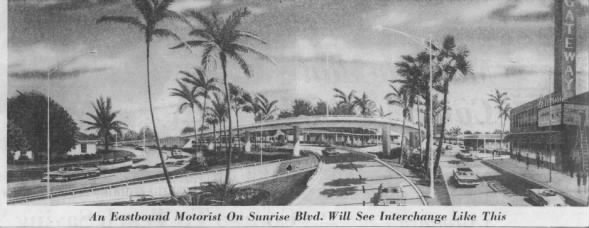 |
| Jefferson Stores, Fort Lauderdale 1974 Florida State Archives/Erickson |
Seven facts as reported by news sources listed below.
1. First Jefferson Store established in Miami in 1946 by hotelier Harry Mufson (d. 1973), once part owner of the San Souci Hotel who later built the Eden Roc Hotel (1956) causing a rancorous split with Fontainebleau owner and partner, Ben Novack;
2. Jefferson SuperStores was tapped as the nation’s Outstanding Westinghouse Dealer in 1953;
3. The Fort Lauderdale store opened July 20, 1960 at 2400 N. Federal Highway with: 1,000
parking spaces, 156,000 sq. ft., a photographic studio, shoe repair, beauty shop, pet shop, home improvement department, bake shop, restaurant, tailor, dry cleaner, jewelry department (featuring Miss Florida, Kathy Magda, for opening day), and Funland’s indoor rides for kids;
4. By 1969, other South Florida Jefferson locations included prime sites in Boca Raton, Hollywood, West Fort Lauderdale and West Palm Beach;
5. By the 1970s, more than 20 Jefferson SuperStores operated in Florida, with 500 employees at its Miami headquarters.
6. Montgomery Ward reportedly purchased Jefferson’s in 1973 for $37 million in stock; the stores were then known as Jefferson Wards;
7. By 1985, Jefferson Ward operated 23 stores in Florida and three in Virginia but, according to news accounts, 200 of its 500 employees were laid off at the Miami headquarters. The same year, Jefferson’s was put up for sale but merchandise was eventually liquidated by AMA Management Company.
Sources:
Miami News, Nov. 19, 1953
Fort Lauderdale News, July 20, 1960
Miami News, Oct. 13, 1961
Palm Beach Post, Nov. 21, 1969
Miami News, May 14, 1973
Miami News, May 30, 1985
Miami News, Aug. 16, 1985
Tags: Fort Lauderdale retail history, Fort Lauderdale history, Harry Mufson, Eden Roc Hotel, Miami history, Jefferson SuperStores








